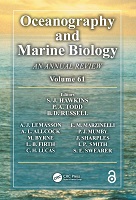Chapter Advancing and Integrating ‘Biomonitoring 2.0’ with New Molecular Tools for Marine Biodivesity and Ecosystem Assessments
Proposal review
| dc.contributor.author | Cheong Aden Ip, Yin | |
| dc.contributor.author | Jin Marc Chang, Jia | |
| dc.contributor.author | Huang, Danwei | |
| dc.date.accessioned | 2023-10-16T09:44:25Z | |
| dc.date.available | 2023-10-16T09:44:25Z | |
| dc.date.issued | 2023 | |
| dc.identifier | ONIX_20231016_9781032426969_6 | |
| dc.identifier.uri | https://library.oapen.org/handle/20.500.12657/76832 | |
| dc.description.abstract | Global declines in biodiversity have become increasingly severe. Traditional monitoring approaches for assessing marine species distributions and abundances are time consuming, costly, and manpower intensive. Fortunately, rapid progress of sequencing technologies from first-generation to high-throughput sequencing have resulted in improvements in experimental techniques. These advances have accelerated rates of species discovery and identification, enabling community-level biomonitoring – the ‘Biomonitoring 2.0’ framework. Simultaneous multispecies identifications in mixed-sample pools are now mainstream with DNA metabarcoding, upscaling monitoring from the individual specimen to the ecosystem scale. In this review, we examine the progress of DNA metabarcoding over the last decade in the characterisation of marine macrobiota to microbial communities. By melding molecular techniques and more traditional taxonomic tools, this integrative Biomonitoring 2.0 approach is tailored to improve the overall effectiveness of biomonitoring. As such, we here assess its accuracy, expertise requirement, general applicability, time, cost-effectiveness, and throughput for biomonitoring. We highlight various methodological challenges that must be considered during implementation, including completeness of reference databases, representativeness of sequencing read counts for quantitative estimates, and supplementation with environmental RNA for discerning live signals from legacy DNA. Finally, we conclude with an outlook of the enhanced Biomonitoring 2.0 framework for mass adoption by ecologists and managers, as well as the prospects of emerging rapid detection technologies for ecosystem surveillance. | |
| dc.language | English | |
| dc.subject.other | Barcoding | |
| dc.subject.other | Bioinformatics | |
| dc.subject.other | Environmental DNA Metabarcoding | |
| dc.subject.other | Environmental RNA | |
| dc.title | Chapter Advancing and Integrating ‘Biomonitoring 2.0’ with New Molecular Tools for Marine Biodivesity and Ecosystem Assessments | |
| dc.type | chapter | |
| oapen.identifier.doi | 10.1201/9781003363873-7 | |
| oapen.relation.isPublishedBy | 7b3c7b10-5b1e-40b3-860e-c6dd5197f0bb | |
| oapen.relation.isPartOfBook | a56f7fb8-e1e2-4255-8dc7-83834c7e9de5 | |
| oapen.relation.isFundedBy | 44909cb6-ff1b-45d1-be4f-12c79ca5d50b | |
| oapen.relation.isbn | 9781032426969 | |
| oapen.relation.isbn | 9781032548456 | |
| oapen.relation.isbn | 9781003363873 | |
| oapen.imprint | CRC Press | |
| oapen.pages | 33 | |
| oapen.place.publication | Boca Raton, Abingdon | |
| oapen.grant.number | [...] | |
| peerreview.anonymity | Single-anonymised | |
| peerreview.id | bc80075c-96cc-4740-a9f3-a234bc2598f1 | |
| peerreview.open.review | No | |
| peerreview.publish.responsibility | Publisher | |
| peerreview.review.stage | Pre-publication | |
| peerreview.review.type | Proposal | |
| peerreview.reviewer.type | Internal editor | |
| peerreview.reviewer.type | External peer reviewer | |
| peerreview.title | Proposal review | |
| oapen.review.comments | Taylor & Francis open access titles are reviewed as a minimum at proposal stage by at least two external peer reviewers and an internal editor (additional reviews may be sought and additional content reviewed as required). |

